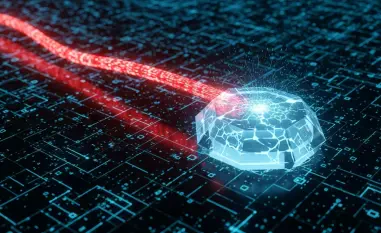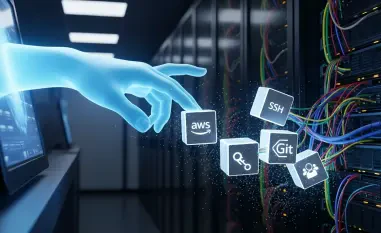In an era where cyber espionage looms as a persistent threat to global security, a seemingly benign tool like ClickOnce, Microsoft’s application deployment framework, has emerged as a potent weapon in the hands of sophisticated threat actors. Reports of targeted attacks on diplomatic entities across South Asia reveal how this technology, designed for seamless software distribution, is being twisted into a vehicle for delivering malware with devastating precision. This review delves into the intricate duality of ClickOnce, examining its legitimate purpose, its exploitation by malicious entities, and the broader implications for cybersecurity defenses in a landscape increasingly defined by stealth and subterfuge.
Understanding ClickOnce as a Deployment Tool
ClickOnce, introduced by Microsoft as a framework for deploying Windows applications, simplifies the process of installation and updates directly from the web. Its design caters to developers and enterprises seeking efficient distribution with minimal user intervention, allowing applications to be launched with a single click while ensuring automatic updates. Built-in security mechanisms, such as code signing, aim to verify the authenticity of the software, fostering trust among users and organizations relying on this technology for operational efficiency.
Beyond its core functionality, ClickOnce holds a significant place in the technological ecosystem due to its integration with .NET frameworks and compatibility with various Windows environments. This versatility makes it a preferred choice for deploying business applications, particularly in environments where rapid updates are critical. However, the very features that make ClickOnce appealing—ease of access and trusted certificates—also lay the groundwork for exploitation when wielded by adversaries with malicious intent.
Exploitation Mechanisms: How ClickOnce Becomes a Threat
PDF-Linked Deployment Tactics
One of the most insidious methods of exploiting ClickOnce involves the use of PDF files as an initial infection vector. Threat actors craft spear-phishing emails that lure victims into clicking a button disguised as a legitimate update prompt, often mimicking trusted software like Adobe Reader. This action triggers the download of a ClickOnce application from a remote server, bypassing user suspicion by presenting a familiar interface while silently installing malicious executables in the background.
The mechanics of this approach rely heavily on social engineering, exploiting the inherent trust users place in routine updates. Once activated, the ClickOnce application retrieves payloads from obscure domains, often hosted on compromised or temporary servers. This method not only evades initial detection but also complicates post-infection analysis, as the malicious components are often removed or relocated after deployment, leaving minimal traces for investigators to follow.
Side-Loading via Legitimate Executables
Another sophisticated tactic involves side-loading malicious code through legitimate, digitally signed executables. A notable example includes the use of “ReaderConfiguration.exe,” a valid application from MagTek Inc., which is exploited to load a malicious DLL under the guise of routine functionality. This approach leverages the trust associated with verified certificates, making it difficult for security systems to flag the activity as suspicious.
During such attacks, victims are often presented with decoy documents—seemingly innocuous PDFs or reports—that distract from the underlying malicious processes. Meanwhile, the sideloaded DLL decrypts and deploys further malware, such as data-stealing implants, capable of harvesting sensitive information. This blending of legitimate and malicious elements underscores the challenge of distinguishing friend from foe in the digital realm, where trust is a currency easily exploited.
Trends Shaping ClickOnce-Based Threats
Recent observations indicate a sharp rise in the adoption of ClickOnce by advanced persistent threat (APT) groups, particularly those engaged in cyber espionage. Groups like SideWinder have integrated this technology into multi-wave phishing campaigns, targeting high-profile entities with tailored lures that reflect deep geopolitical awareness. This evolution marks a shift from isolated exploits to coordinated, persistent attack chains that test the resilience of traditional security measures.
A notable trend is the combination of ClickOnce with other infection vectors, such as Microsoft Word exploits, to diversify entry points and maximize impact. Additionally, adversaries employ dynamically generated payload paths, ensuring that each attack instance uses unique download links to evade signature-based detection systems. This adaptability highlights a growing sophistication among threat actors, who continuously refine their methods to stay ahead of evolving defenses.
The geographic focus of these campaigns often centers on specific regions, with South Asian diplomatic and governmental bodies frequently in the crosshairs. The use of region-locked command-and-control communications further complicates mitigation efforts, as security teams struggle to intercept or analyze traffic that appears localized and legitimate. This trend signals a broader shift toward hyper-targeted attacks, where precision and context are as critical as technical prowess.
Real-World Impact: ClickOnce in Cyber Espionage
The deployment of ClickOnce in real-world cyber espionage campaigns reveals its potency against high-value targets. Diplomatic entities, including embassies and government organizations in South Asia, have faced relentless attacks orchestrated through meticulously crafted phishing emails. These campaigns often impersonate credible sources, using document titles that resonate with the geopolitical concerns of the targeted region to ensure higher success rates.
Specific instances demonstrate how attackers tailor their lures to exploit regional tensions or inter-ministerial dialogues, crafting emails that appear urgent and relevant. Once the ClickOnce application is deployed, it facilitates the installation of custom malware designed for data exfiltration, including screenshots, keystrokes, and sensitive files. Such capabilities enable adversaries to gather intelligence with profound implications for national security and international relations.
The ripple effects of these attacks extend beyond immediate data theft, eroding trust in digital communications among diplomatic circles. As threat actors refine their techniques, the strategic use of ClickOnce underscores a chilling reality: tools built for convenience can be weaponized to undermine the very institutions they were meant to serve. This duality poses a unique challenge for cybersecurity professionals tasked with safeguarding critical infrastructure against an ever-adapting enemy.
Defensive Challenges Against ClickOnce Exploits
Mitigating the risks posed by ClickOnce-based attacks presents significant hurdles for cybersecurity teams. The primary obstacle lies in distinguishing between legitimate applications and those repurposed for malicious ends, especially when signed with valid certificates. Traditional detection methods often fail to flag such executables, as they appear trustworthy on the surface, allowing malware to operate undetected for extended periods.
Further complicating defense efforts are the dynamically changing command-and-control communications employed by attackers. These fluid infrastructures make it difficult to pinpoint and block malicious traffic, as payload delivery paths and server locations shift frequently. Regulatory gaps in software deployment security exacerbate the issue, as there are limited standards to enforce stricter oversight of how technologies like ClickOnce are utilized or abused.
Ongoing efforts by cybersecurity firms focus on developing advanced behavioral analysis tools to identify anomalies in application execution, even when surface indicators appear benign. However, the cat-and-mouse game between defenders and attackers persists, with each side adapting to the other’s innovations. This dynamic underscores the need for a multi-layered approach that combines technical solutions with heightened user awareness to reduce the likelihood of successful exploitation.
Future Trajectories of ClickOnce Exploitation
Looking ahead, the potential evolution of ClickOnce as an attack vector raises critical concerns for the cybersecurity community. Threat actors are likely to further refine their techniques, leveraging advancements in obfuscation and automation to bypass emerging security solutions. Over the next few years, from 2025 onward, an increase in polymorphic payloads and AI-driven phishing campaigns could amplify the stealth and effectiveness of these attacks.
On the defensive front, advancements in detection tools that prioritize real-time monitoring and machine learning may offer a counterbalance to escalating threats. Such technologies could focus on identifying behavioral patterns rather than relying solely on static signatures, providing a more proactive stance against exploitation. Yet, the success of these measures will hinge on collaboration between software developers, security vendors, and regulatory bodies to establish robust frameworks for deployment security.
The long-term impact of ClickOnce exploits may also reshape trust in software distribution mechanisms, prompting a reevaluation of how such technologies are designed and implemented. As adversaries continue to exploit the intersection of convenience and vulnerability, the industry must grapple with balancing user accessibility against the imperatives of security, a challenge that will define the digital landscape for years to come.
Final Reflections on ClickOnce’s Role in Cybersecurity
Reflecting on the comprehensive analysis, it becomes evident that ClickOnce stands as both a facilitator of efficient software deployment and a significant vulnerability exploited by cyber adversaries. The detailed examination of its mechanisms, from PDF-linked deployments to side-loading tactics, reveals a stark reality of how trusted tools are turned against their users. Real-world campaigns targeting diplomatic entities underscore the severe consequences of such exploits, while defensive challenges highlight the persistent gaps in current security postures.
Moving forward, actionable steps emerge as a priority for stakeholders across the spectrum. Strengthening user education to recognize phishing attempts, coupled with the development of anomaly-based detection systems, offers a pathway to mitigate risks. Additionally, fostering international cooperation to address regulatory shortcomings and share threat intelligence promises to bolster defenses against sophisticated actors who thrive on exploiting tools like ClickOnce, ensuring that the lessons learned pave the way for a more resilient cybersecurity future.













